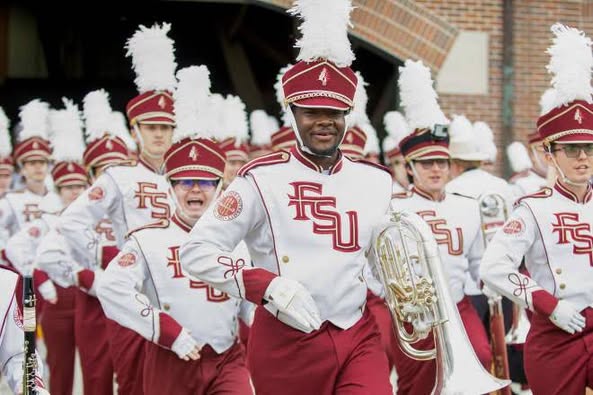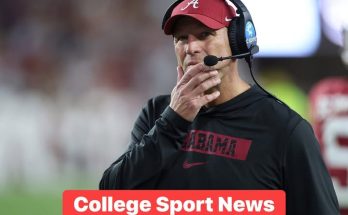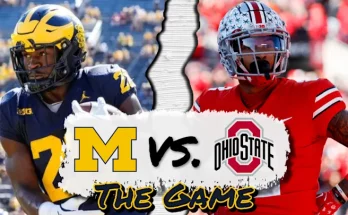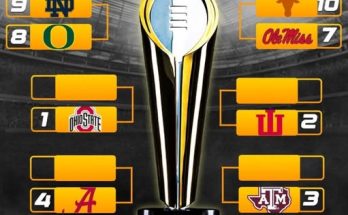In a world dominated by streaming numbers, social media metrics, and high-dollar entertainment contracts, few would have guessed that a college marching band from a southern town in Florida would capture the global spotlight. But against all odds, Florida State University’s Marching Chiefs have done just that — catapulting to international acclaim and being officially crowned the No. 1 marching band in the world by a panel of global experts and music historians. The news has sent shockwaves through both the collegiate athletics and performing arts communities, as the world grapples with the rise of a group that had long been regarded as great — but not necessarily elite — outside of its regional acclaim.
The Marching Chiefs, long a staple of Florida State’s game-day traditions and Southern culture, are no strangers to recognition. They’ve played for presidents, appeared in national broadcasts, and been invited to prestigious bowl games. But even their most ardent supporters were stunned when ESPN’s primetime special aired the moment: Florida State’s Marching Chiefs had outpaced the likes of Ohio State’s TBDBITL (The Best Damn Band in the Land), USC’s Spirit of Troy, and the Pride of Oklahoma to seize the global throne. Not just the best in America. The best in the world.
For many, this historic moment was the culmination of decades of hard work, deep cultural roots, and a commitment to musical excellence that went largely underappreciated until now. But for those within the program — students, alumni, and supporters alike — it was long overdue.
Founded in 1939 with just 20 members, the Marching Chiefs have evolved from a fledgling college ensemble into a 400-plus member juggernaut. Throughout the decades, they have built a reputation not just for powerful sound and razor-sharp formations, but also for their inclusive, family-like environment and undying school spirit. They are, as many Chiefs say, “the heartbeat of Tallahassee.” Now, they’re the heartbeat of the world.
So how did it happen?
Sources inside ESPN say the global panel’s ranking process took over a year and evaluated hundreds of bands from six continents based on categories including musical precision, innovation in marching design, international cultural impact, and audience engagement. Florida State’s Marching Chiefs scored remarkably high across every category — with their groundbreaking 2024 “Legacy & Thunder” halftime show being the turning point in the voting.
That show, performed during FSU’s primetime matchup against Clemson, featured a 12-minute medley of iconic pieces ranging from Beethoven’s “Ode to Joy” to Michael Jackson’s “Smooth Criminal,” seamlessly choreographed with pyrotechnics, precision formations, and an emotional tribute to military veterans that left fans — and judges — in tears. The performance went viral, racking up over 100 million views in less than a week. It was a cultural tipping point. Suddenly, the world couldn’t stop talking about the Marching Chiefs.
From Tokyo to London, Rio to Johannesburg, the Chiefs became a phenomenon. News segments broke down their routines. Reaction videos flooded TikTok. International orchestras reached out to collaborate. But as the glitz and glamour of fame took hold, the Chiefs never lost sight of who they are — students, musicians, and ambassadors of tradition.
What separates the Chiefs from their counterparts isn’t just talent — though they have it in spades — it’s heart. It’s the 5 a.m. practices in the blistering heat. It’s the grit to perform in hurricane conditions without missing a beat. It’s the trust built among strangers from across the country who become family the moment they march into Doak Campbell Stadium together. It’s the legacy passed down from generation to generation — where every uniform stitch, every high-step, and every blast of a trumpet tells the story of something far greater than a game.
That heart is led by Dr. Patrick Dunnigan, the longtime Director of Bands at Florida State and a visionary who has been instrumental in propelling the Chiefs to new heights. Known for his humility and fierce commitment to excellence, Dunnigan deflected personal praise when the announcement came. “This isn’t about me,” he told ESPN. “It’s about the students. It’s about 85 years of Chiefs who gave everything for something bigger than themselves. This honor belongs to them.”
Indeed, the Marching Chiefs’ rise to the top has been nothing short of cinematic. They’ve faced budget cuts, logistical nightmares, and — like every program — the COVID-19 pandemic, which once silenced their instruments entirely. Yet through it all, they emerged stronger, more united, and more determined to share their message with the world.
Their message? That greatness isn’t always born in major cities or million-dollar studios. Sometimes, it’s found on a grassy practice field in Tallahassee. Sometimes, it’s forged in sweat, laughter, and the raw beauty of over 400 individuals breathing as one. Sometimes, it’s the sound of drums echoing down College Avenue as an entire town stops to listen.
That is the essence of the Marching Chiefs.
As word of their historic No. 1 ranking spread, tributes poured in from every corner of the globe. John Williams, the legendary composer behind “Star Wars” and “Jurassic Park,” called their sound “awe-inspiring.” Beyoncé’s creative team reached out to explore a future collaboration. And Leonard Bernstein’s estate officially endorsed the Chiefs’ rendition of “Candide” as “the most emotionally powerful performance ever captured by a college ensemble.”
In Tallahassee, spontaneous celebrations erupted on campus and in the streets. Students danced to drumline beats, alumni booked last-minute flights to come back and witness history firsthand, and the FSU athletic department unveiled a commemorative patch to be worn on every football jersey next season: a crown, etched above the iconic Chief logo.
But what does this newfound fame mean for the future of the program?



